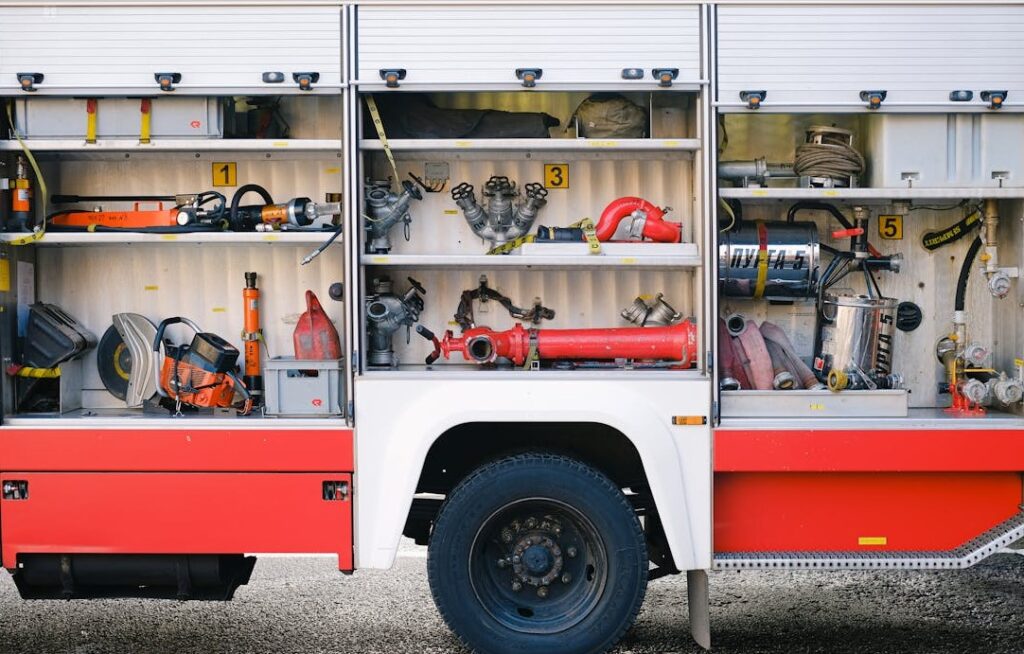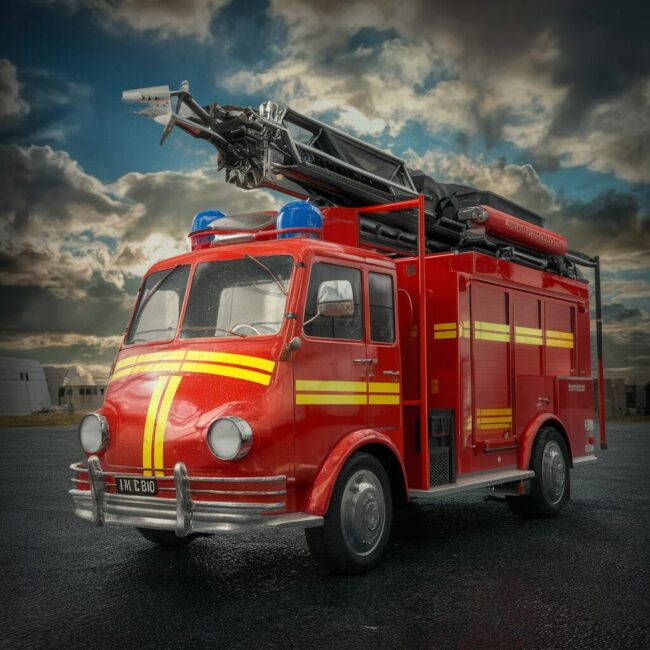Choosing the Right Equipment for Your Fire Station: 4 Tips

When it comes to running a fire station, having the right equipment is crucial. From firefighting tools to protective gear, every item plays a vital role in ensuring the safety of both firefighters and the community they serve.
Last October, AJC reported that several fire stations in Atlanta had to temporarily shut down due to a lack of equipment. All of them are in the metro area of Atlanta. Apart from shutting down, fire stations also fail to deal with emergencies properly due to a lack of proper equipment.
Earlier this year, Inquirer reported that in the mountains of Benguet and Mountain Province, the lack of equipment has made firefighting challenging. Thus, it’s evident that an ill-equipped fire station is of little to no use during emergencies. However, with so many options available on the market, choosing the right firefighting equipment can be overwhelming.
To help streamline the process, here are some essential tips to consider when selecting equipment for your fire station.
1. Assess Your Needs

Before diving into the purchasing process, take the time to assess your station’s specific needs.
Consider factors such as the size of your service area and the types of emergencies you commonly respond to. By understanding your requirements, you can narrow down your options and prioritize the equipment that will best serve your station and community.
For instance, if your station frequently deals with wildfires in rural areas, investing in specialized wildfire suppression equipment, like portable pumps, may be necessary. On the other hand, if your primary focus is urban firefighting, high-rise rescue equipment and thermal imaging cameras might be more pertinent.
2. Prioritize Quality and Reliability
When it comes to firefighting equipment, quality and reliability are non-negotiable. The safety of both firefighters and civilians depends on the effectiveness of the gear they use.
Opting for high-quality equipment from reputable manufacturers may require a larger initial investment. However, it pays off in the long run by minimizing the risk of equipment failure and ensuring optimal performance during emergencies.
According to WWNY, the cost of firefighting gear and equipment has gone up in recent times. Therefore, before making a purchase, thoroughly research the reputation of potential suppliers and read reviews from other fire departments. That way, you’ll know you’re getting the best possible deal for the price.
Additionally, look for equipment that meets or exceeds industry standards and undergoes rigorous testing for durability and safety compliance.
3. Invest in Training and Education

Even the most advanced firefighting equipment is only as effective as the individuals operating it. Investing in comprehensive training for your firefighting team is essential to ensure they can safely and proficiently use the equipment at their disposal.
Prioritize hands-on training sessions that simulate real-world scenarios and familiarize firefighters with the proper use and maintenance of each piece of equipment. Additionally, provide opportunities for ongoing education to keep your team abreast of the latest advancements in firefighting technology and techniques.
Firefighters should also be taught about equipment or types of extinguishers they shouldn’t be using. For instance, as per TorHoerman Law, the AFFF firefighting foam contains PFAS or forever chemicals. Thus, individuals exposed to these chemicals through the AFFF foam have reported adverse health effects, including cancer.
All this resulted in the AFFF firefighter foam lawsuit. Firefighters should be made aware of such toxic firefighting foam. At the same time, those managing the stations should take measures to avoid the use of such toxic foam and other harmful equipment.
4. Consider Versatility and Compatibility
In a dynamic emergency response environment, versatility and compatibility are key attributes to look for in firefighting equipment. Choose gear that can adapt to a variety of situations and seamlessly integrate with existing tools and systems within your station. This ensures that your firefighters can respond efficiently and effectively to any emergency scenario they encounter.
For example, when selecting breathing apparatus, opt for models that are compatible with interchangeable cylinders and accessories. This allows for easy customization based on the specific needs of each firefighting operation.
Similarly, choose communication systems that are interoperable with those used by neighboring fire departments to facilitate seamless coordination during mutual aid responses.
Frequently Asked Questions (FAQs)
What type of equipment is necessary for protecting firefighters?
Firefighters rely on essential protective gear such as turnout coats, pants, boots, helmets, and gloves to shield against heat and flames. Additionally, self-contained breathing apparatus (SCBA) is crucial to prevent inhalation of smoke and toxic gasses encountered during firefighting tasks.
Do fire stations only need fire trucks?

Fire stations require more than just fire trucks; they also need equipment like fire hoses, ladders, firefighting tools, and medical supplies. Also, facilities for personnel, such as dormitories, kitchens, and training areas, are essential for operational readiness.
What type of equipment do you need to combat wildfires specifically?
Combatting wildfires requires specialized equipment, including fire retardant or water-dropping aircraft such as helicopters and fixed-wing planes. Besides, bulldozers for creating firebreaks and specialized fire trucks equipped with pumps and hoses are essential for ground-based firefighting efforts.
In conclusion, choosing the right equipment for your fire station requires careful consideration. By following these essential tips, you can equip your fire station with the tools and gear needed to effectively protect your community.

 A Complete Guide to Personalized Gift Ideas That Carry Real Thought and Value
A Complete Guide to Personalized Gift Ideas That Carry Real Thought and Value  Creative Gift Ideas for Anime Lovers and Collectors: Unique Picks You Will Adore
Creative Gift Ideas for Anime Lovers and Collectors: Unique Picks You Will Adore  Sightseeing in Kuala Lumpur: 12 Things to See on Your Trip (2023)
Sightseeing in Kuala Lumpur: 12 Things to See on Your Trip (2023)  4 Tips and Mistakes to Avoid When Visiting Thailand On a Budget
4 Tips and Mistakes to Avoid When Visiting Thailand On a Budget  Neuschwanstein Castle From Munich Day Trip Guide
Neuschwanstein Castle From Munich Day Trip Guide  Oxford ─ England’s City of Dreaming Spires
Oxford ─ England’s City of Dreaming Spires